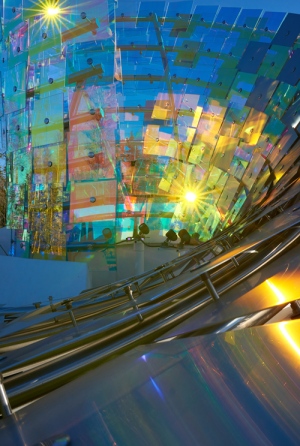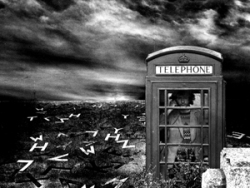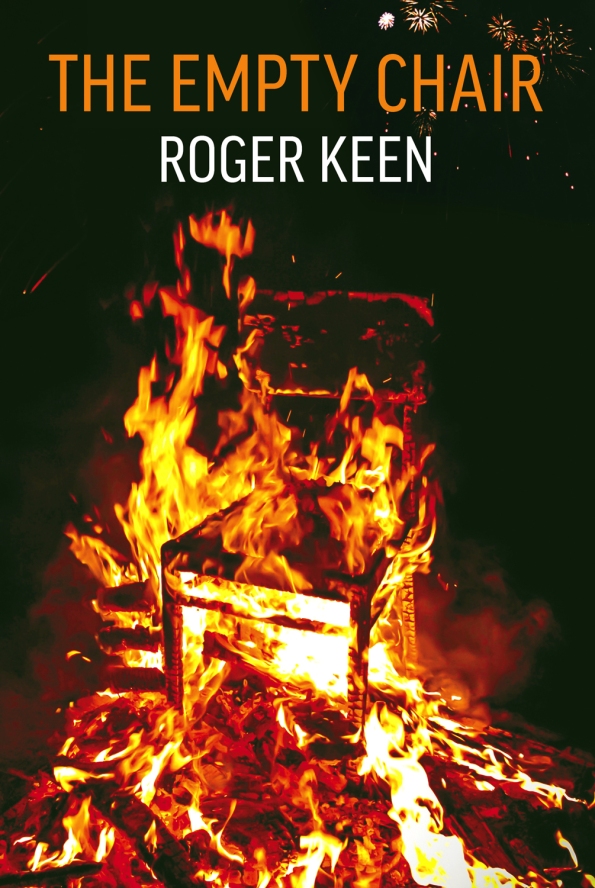Archive
The Soundless Hum: Psychonautic Underpinnings of William Burroughs’ Naked Lunch
This article was originally published in the Psychedelic Press UK print journal 2013 Vol.2 and is now up on the Psypress site.
Mostly everyone has heard of William Burroughs’ drug-inspired masterpiece Naked Lunch, but far fewer have actually read it from cover to cover and fewer still have properly understood what Burroughs is doing in its pages.
Often dismissed as incomprehensible, pornographic and, due to its lack of formal narrative structure, unfilmable, Naked Lunch was nevertheless tackled on celluloid by David Cronenberg in 1991, resulting in a movie that is only minimally representative of the book and tends to deepen its mystery rather than clarify it. Reinventing from scratch and substituting his own authorship, Cronenberg ‘sampled’ Burroughs’ life and work in order to produce a body-horror pastiche that owes as much to the Ted Morgan biography and the novels Exterminator and Junkie as Naked Lunch itself. But for many people that film stands for what Naked Lunch is about.
Another common misconception is that Naked Lunch is about ‘the horrors of addiction,’ a description more suited to Burroughs’ autobiographical first novel Junkie. By the time of Naked Lunch, he’d moved on considerably from depicting anything so mundane or literal as that. What Naked Lunch represents is the fruit of a pharmo-picaresque creative journey that was partly inspired by opiate addiction but that rapidly expanded to encompass the visions of majoun, peyote and most particularly ayahuasca or yagé, whose psychonautic propensity underscores much of the grotesque, lurid phantasmagoria for which the novel is famous… Read more on Psypress UK
My in-depth review of Barry Miles’ biography of William Burroughs is included in the new issue of the Psypress magazine. More information at the Psypress Shop.
William Burroughs: Ayahuasca Tourist
Way back in 1951, three years before Aldous Huxley published The Doors of Perception and awareness of the entheogenic properties of psychedelics in the West was almost non-existent, William Burroughs made his first expedition to Panama and Ecuador in search of ‘yage’, as he called it, or ayahuasca, which he knew was used by Indians in shamanic rites and was said to increase telepathic sensitivity. As one of the earliest Western explorers with an experiential rather than an academic motive, he proved himself to be way ahead of his time, prefiguring a widening interest in the substance, which has now gone almost mainstream and blossomed into what we call ‘ayahuasca tourism’.
That first expedition, described in Burroughs’ novel Queer, proved unsuccessful; but Burroughs returned to Panama in 1953 and this time he went on to Bogotá, where he had the good fortune to meet botanist Richard Evans Schultes, a world authority on hallucinogenic plants and a Harvard contemporary of Burroughs. Schultes told Burroughs about the methods of preparing ayahuasca, and also about the Indian mythology surrounding it and its use as a means of communicating with the spirit world. Schultes, who sampled the hallucinogenic specimens he discovered, had tried ayahuasca, but said his own experience was limited to vivid colours and no visions. He pointed Burroughs in the direction of the Putumayo River, where he would find brujos who made the ayahuasca brew.
In Mocoa Burroughs met an old brujo who prepared the black liquid, oily in texture and bitter in taste. Soon afterward ingesting it Burroughs experienced blue flashes and a wave of nausea, and, though he could hardly walk, he staggered out of the brujo’s hut and retched violently. He continued to have intense hallucinations, needing to take barbiturates in order to bring himself down, and he later concluded ayahuasca was the real mind-bending kick he was seeking, though this was clearly an overdose.
Later in the expedition Burroughs made a discovery about the preparation of ayahuasca that proved highly significant; in fact he is apparently the first Westerner to come upon this information – which came as news to even Schultes himself. Burroughs learned from another brujo that in order to release the full hallucinating effects of ayahuasca, another plant – chacruna – needs to be added to the brew. This functions as a monoamine oxidase inhibitor, activating the DMT in the ayahuasca and essential for the proper experience. In a letter to Allen Ginsberg in June 1953, Burroughs waxes lyrical about one of his trips in this new mode – a marked contrast to the turmoil of the earlier experience. ‘I experienced first a feeling of serene wisdom so that I was quite content to sit there indefinitely.’
The further fruits of this trip were written up in a fictional letter to Ginsberg in The Yage Letters, which includes contributions from both writers and was eventually published in 1963, when entheogenic interest in psychedelics was well established. This early work depicting ayahuasca tourism went on to inspire Terence and Dennis McKenna in their own journey to the Amazon and led to their book The Invisible Landscape: Mind, Hallucinogens and the I Ching. Burroughs’ ayahuasca visions were also very important in the development of his most famous novel, Naked Lunch, starting him on his unique and audacious path of literary experimentation.
Read my full account of how ayahuasca informed Naked Lunch in the current PsypressUK magazine, which also includes a brief history of psychedelic research from Stanislav Grof, an account of the political difficulties of getting support for psychedelic medicine from Ben Sessa, an informative story about how Allen Ginsberg wrote a poem and turned on publisher Tom Maschler in Wales, plus reflections on Jung and Castaneda and an excellent account of a recent Peruvian ayahuasca experience from Alison Terry. More details here: PsypressUK 2013 Vol.2.
Castaneda—Then and Now
 I first got into Castaneda in the mid-’70s, when Tales of Power was his latest and he was a huge inspirational figure to the psychedelic movement, but at the same time was coming under attack on the grounds that his anthropological fieldwork was a tissue of fiction. What my friends and I particularly liked about the books was that we could act out their various elements, adapting them to suit our own lives. So we would go out to various ‘power spots’, partake of ‘the little smoke’ and then, having entered the correct frame of mind, ‘stop the world’. In more general terms, we also attempted ‘living like a warrior’, following ‘a path with heart’, practising ‘the gait of power’—which incredibly did work!—and we also developed Castanedaesque commentary to accompany our favourite games. Therefore to attain a maximum score was to achieve a feat of ‘knowledge’, whereas to score poorly was considered to be ‘indulging’ and succumbing to the various enemies of a ‘man of knowledge’.
I first got into Castaneda in the mid-’70s, when Tales of Power was his latest and he was a huge inspirational figure to the psychedelic movement, but at the same time was coming under attack on the grounds that his anthropological fieldwork was a tissue of fiction. What my friends and I particularly liked about the books was that we could act out their various elements, adapting them to suit our own lives. So we would go out to various ‘power spots’, partake of ‘the little smoke’ and then, having entered the correct frame of mind, ‘stop the world’. In more general terms, we also attempted ‘living like a warrior’, following ‘a path with heart’, practising ‘the gait of power’—which incredibly did work!—and we also developed Castanedaesque commentary to accompany our favourite games. Therefore to attain a maximum score was to achieve a feat of ‘knowledge’, whereas to score poorly was considered to be ‘indulging’ and succumbing to the various enemies of a ‘man of knowledge’.
When we read Richard de Mille’s Castaneda’s Journey, which attempts to tear Castaneda apart sentence by sentence, my friends and I disagreed. One friend, who had read widely on anthropology and shamanism, considered that Castaneda no longer had any credibility amongst his peer group members, such as R. Gordon Wasson, Peter Furst and Michael Harner, and ought to be honest and start calling himself a novelist. I then argued that the tenets of his philosophy still held up on a mythological level regardless of whether they had factual or fictional sources.
I wondered whether de Mille’s expose would damage Castaneda’s popularity in the long run, and shortly the ’80s came along and there was a radical zeitgeist shift, with Reaganism taking hold in the U.S. and Thatcherism in the U.K. The acquisitive cult of the yuppie was born, and there was no longer any place for teachings such as don Juan’s. But much more recently, when I looked into Castaneda again, I was struck by how venerated he is by new generations of fans. The ratings for his books on Amazon are impressively high and the number of websites and blogs dedicated to him is huge.
Seemingly today’s psychonauts are not interested in de Mille’s dogmatic wrestling with the issues of fact versus fiction, and instead, like the acid and mushroom trippers of the ’60s and ’70s, see Castaneda’s philosophy as a series of charts by which they can help map their own experiences. Back in the ’70s I saw that the strength of the books rested on their ‘how to’ elements, like recipe or fitness books, and that Castaneda had conferred the status of vicarious sorcerer’s apprentices upon his readership. Now it seems axiomatic that such a process would continue through time. As history teaches us again and again: myth is more powerful than fact.
First appeared on Evolver





